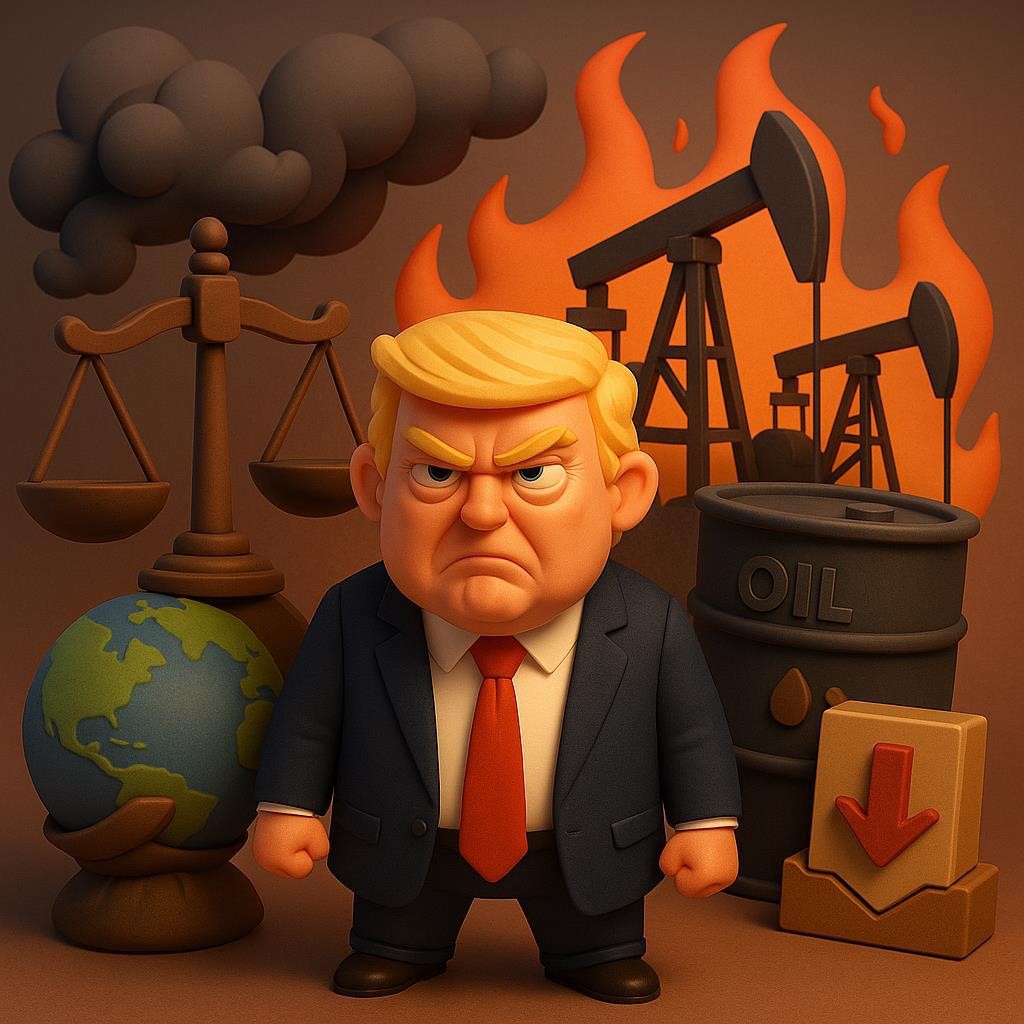
Summary (Crude Oil)
Crude Oil prices bounced back slightly after falling last week. This small recovery was mostly due to traders closing out bearish positions (short-covering). However, the bigger picture for oil remains uncertain. Several key developments are causing concern:
1 Former President Donald Trump wants to remove strict rules on the crude oil and gas industry, but environmental groups are preparing legal action against these changes.
2 Ongoing trade tensions between the U.S. and China are keeping crude oil demand expectations weak.
3 Trump is also putting pressure on the U.S. Federal Reserve to cut interest rates, creating confusion for financial markets.
Overall, oil markets are facing legal, political, and economic uncertainties, making it difficult for prices to rise sustainably.
Fundamental Analysis
1. Environmental Lawsuits Likely Over Deregulation Moves
Trump is pushing to roll back several environmental policies that restrict oil drilling and refining.
These include:
- Easing rules on emissions from oil operations,
- Making it easier to build pipelines and other infrastructure,
- Allowing more drilling on public land.
Environmental lawyers and activists are ready to take these changes to court. If lawsuits are successful, they could slow down or stop new energy projects, especially in shale regions.
Impact on Oil Prices: This won’t affect current supply right away, but it could reduce future output, which might support prices in the medium term.
2. Recent Rebound Mostly from Short-Covering, Not Strong Buying
Oil prices rose a little after a sharp fall, mostly because traders who bet against the market started taking profits. This kind of bounce is usually temporary unless new positive factors appear.
Meanwhile, global demand for oil remains under pressure because:
- China’s factory activity is weaker than expected,
- U.S. manufacturing is slowing down,
- And trade worries are hurting business confidence.
Impact on Oil Prices: With no strong demand growth, any rally is likely to be short-lived unless there’s a surprise supply issue or positive economic news.
3. U.S.-China Trade Tensions Still a Big Risk
Even though the U.S. and China are still talking, tariff threats haven’t gone away. New tariffs on goods or commodities would slow global trade, reducing demand for energy.
If this happens, we could see:
- Slower economic activity,
- Less fuel consumption,
- Lower oil demand — especially from big importers like China.
Impact on Oil Prices: This is a serious downside risk. Any negative trade headlines could pull oil prices lower.
4. Trump’s Pressure on Fed Adds to Market Uncertainty
Trump is asking the U.S. Federal Reserve to lower interest rates to boost the economy. Normally, rate cuts help oil prices because:
- They reduce the value of the U.S. dollar (which helps oil buyers overseas),
- And they support economic growth, which lifts energy demand.
But when political pressure influences central banks, it creates uncertainty. Investors are unsure if the Fed will act independently or follow political demands.
Impact on Oil Prices: Rate cuts could support oil in the future, but the current situation adds confusion and short-term risk.
Technical Analysis: WTI Crude Oil
The recent price action in crude oil shows signs of a recovery after a sharp decline, but the overall chart setup remains cautious. Prices have bounced from a key support zone, where buying interest tends to emerge. However, the upward momentum is still limited, and oil is approaching a resistance area that has historically been difficult to break.
Momentum indicators are gradually turning from bearish to neutral, suggesting that selling pressure is easing, but not yet fully replaced by strong buying. Technical signals such as the Relative Strength Index (RSI) are moving higher from oversold levels, hinting at a possible short-term recovery. However, the Moving Average Convergence Divergence (MACD) still shows a bearish crossover, meaning the broader trend could remain weak unless stronger bullish signals appear.
In short, the technical landscape reflects a market in consolidation, with some early signs of recovery but lacking strong momentum. Traders are watching key breakout levels to confirm whether this bounce is sustainable or just a temporary pause before another leg down.
What to Expect Going Forward
Things That Could Support Prices
- Court decisions that block new U.S. oil projects,
- A surprise interest rate cut by the Fed,
- Improved trade talks or stronger demand from Asia.
Risks That Could Pull Prices Lower
- Fresh tariffs from the U.S. or China,
- Weak economic data from big oil-consuming countries,
- Ongoing political pressure on the Federal Reserve creating market instability.
Final Thoughts
The oil market is currently in a fragile state. While prices have shown a small recovery, there is no strong reason yet for a big rally. Legal battles over energy deregulation, uncertainty aboutU.S.-China trade, and political interference with monetary policy are all weighing on the market.
As a result, traders should prepare for continued price swings and wait for clearer direction from central banks, court rulings, or global demand indicators before expecting a sustained move.
Until then, Happy Trading!
Commodity Samachar Securities
We Decode the Language of the Markets
Also Read: Will FII Buying Change the Market Mood? Capital Has a New Destination and It Starts with +91.
Recommended Read: India’s Semiconductor Surge: Powering the Future of Electronics!
Want Help On Your Trades ?
Chat with RM